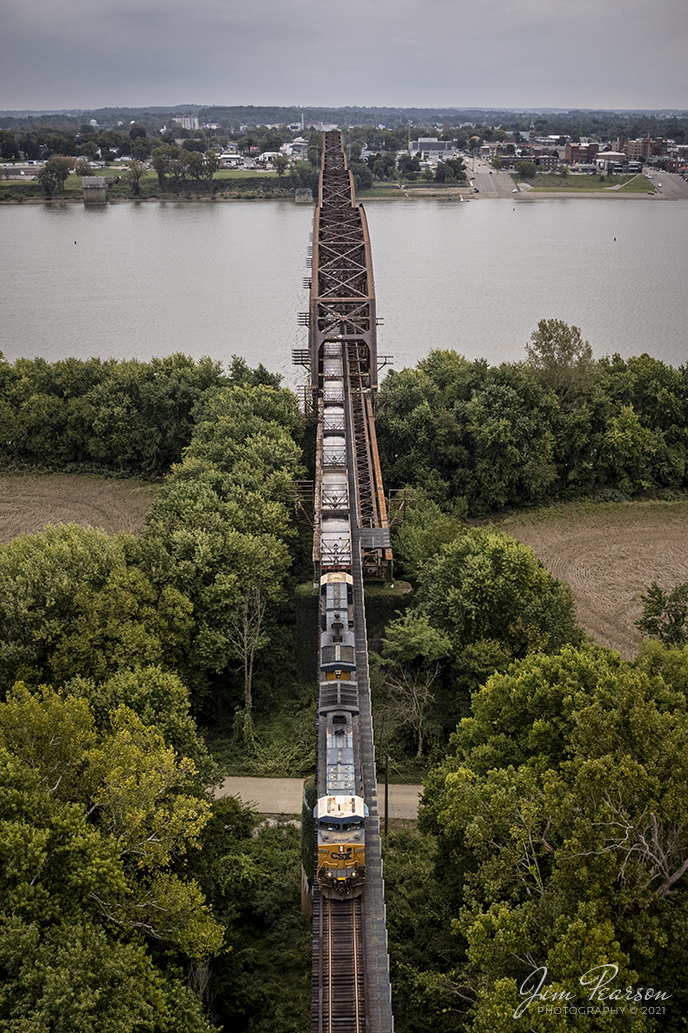On October 13th, 2021, I spent most of the day trackside with Virtual Railfan Moderator UP Dave, (David Siteman) showing him around some of my favorite spots in Western Kentucky and southern Indiana. We both had a great day trackside, and it was finally great to meet him in person! If youre not already a member, check out Virtual Railfan Live and Virtual Railfan Lounge here on Facebook!
Here we find CSXT 5110 as it leads empty coal train CSX E300-12, a Stilesboro, GA (Plant Bowen) to Effingham, IL (CN) train, across the Ohio River bridge from Henderson, KY on the way north to Evansville, IN on the Henderson Subdivision. This bridge was originally built by the Louisville and Nashville Railroad and was intended to be double tracked eventually, but it never happened.
According to Wikipedia: The Bridge spans the Ohio River between Henderson, Kentucky and Vanderburgh County, Indiana. The bridge is owned by the CSX Transportation.
The original bridge was constructed in 1884 to 1885 by the Louisville and Nashville Railroad at a cost of $2,000,000. The single-tracked bridge was approximately 3,686 feet (1,123 m) long, and its longest span, at 525 feet (160 m), was reputed to be the longest trestle span in the world at that time. The bridge ran from the northern edge of Main Street in Henderson to the low water mark on the Indiana side, resting on 15 stone piers. It was designed to carry two 118,000-pound (54,000 kg) engines followed by 60,000-pound (27,000 kg) coal tenders, and its maximum uniform load capacity was 2,500 pounds per foot (3,700 kg/m). A crowd of 8,000 watched the first train cross the bridge on July 13, 1885.
Prior to the opening of the bridge, railroad passengers and freight had to be transferred to a ferry for the river crossing. The bridge reduced the travel time by several hours.
By 1930 the volume and weight of train traffic were taxing the capabilities of the original bridge. Construction of a new bridge just upstream of the old one began in May 1931. The new bridge, costing over $3,000,000, opened on December 31, 1932. Including its approaches, It is 12,123 feet (3,695 m) long, and its span over the main channel is 648 feet (198 m) long. The demolition of the old bridge, using dynamite, was completed on December 11, 1933.
Tech Info: DJI Mavic Air 2S Drone, RAW, 22mm, f/2.8, 1/1000, ISO 100.

